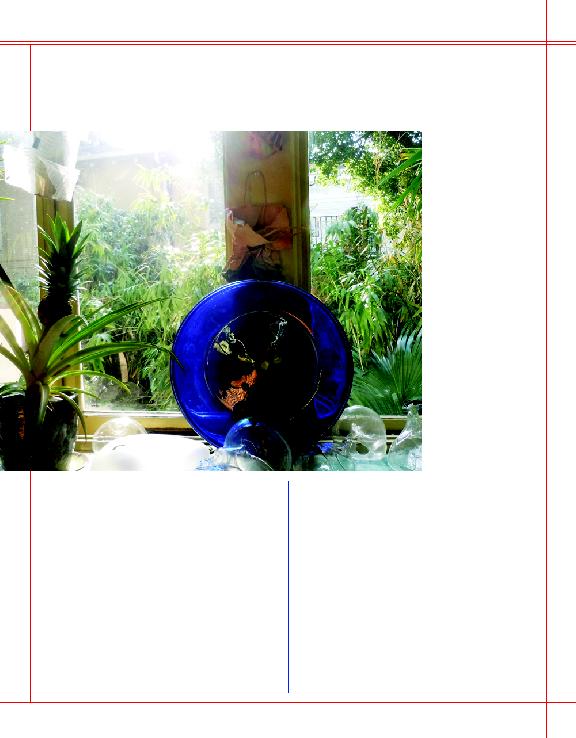
miles away. Like an exclusive restaurant, it requires going
out to reach. At home, art is usually a different breed--
decorative, tasteful, accentual, and probably purchased a
long distance from the hand of the artist.
around--that art can (and should) be as fundamental a
part of home as the welcome mat and as integral as the
wiring. To see what I mean, stop by the home of Jeanne
Nathan and Robert Tannen in New Orleans. You'll know it
by concrete block pyramids and towers jutting upwards
from the vegetation beds and large sheet-metal blocks
cavorting amongst the bushes just inside the front gate.
piano dripping with ceramics, wood carvings, and scrolls
De Witt, a Belgian monk, depicts the energetic patrons of
a Canal Street restaurant. But nothing compares to what
happens when you turn left into the living area. Had Willy
Wonka dedicated the same vigor to art collecting as he
did to chocolate production, this might have been the
result--a lush jungle of colored glass, metal, plastic, clay,
ink, wood, and fabric.
New Orleans, and Tannen, an urban planner, began
their collection more than forty years ago with a signed
pottery piece by Rookwood artist Wilhelmina Rhemes
and a Viennese blown-glass vase that has a match in
the Smithsonian museum. "We didn't consciously start
collecting," says Nathan. "We just appreciated different
work by artists, ceramic artists, furniture makers, and so on."
satisfaction we
feel when leaving
not just that we've
fulfilled our cultural
quotient for the month,
or proved civic pride
with a demonstration
of community support,
or merely because
of the free wine.
It's an unspoken
acknowledgement that
any artistic experience,
however passive,
provides spiritual
nourishment. We walk
out a better person than
we went in.